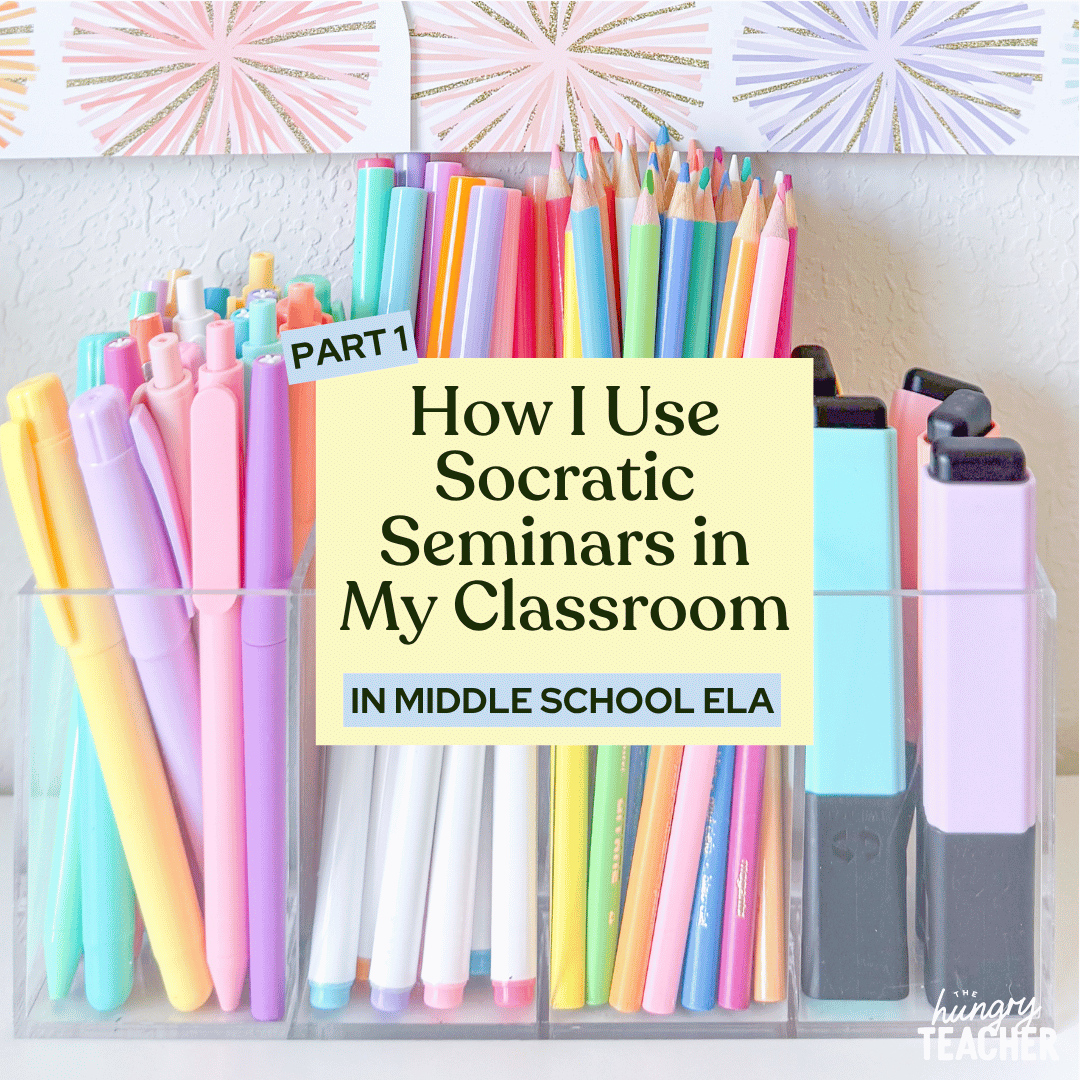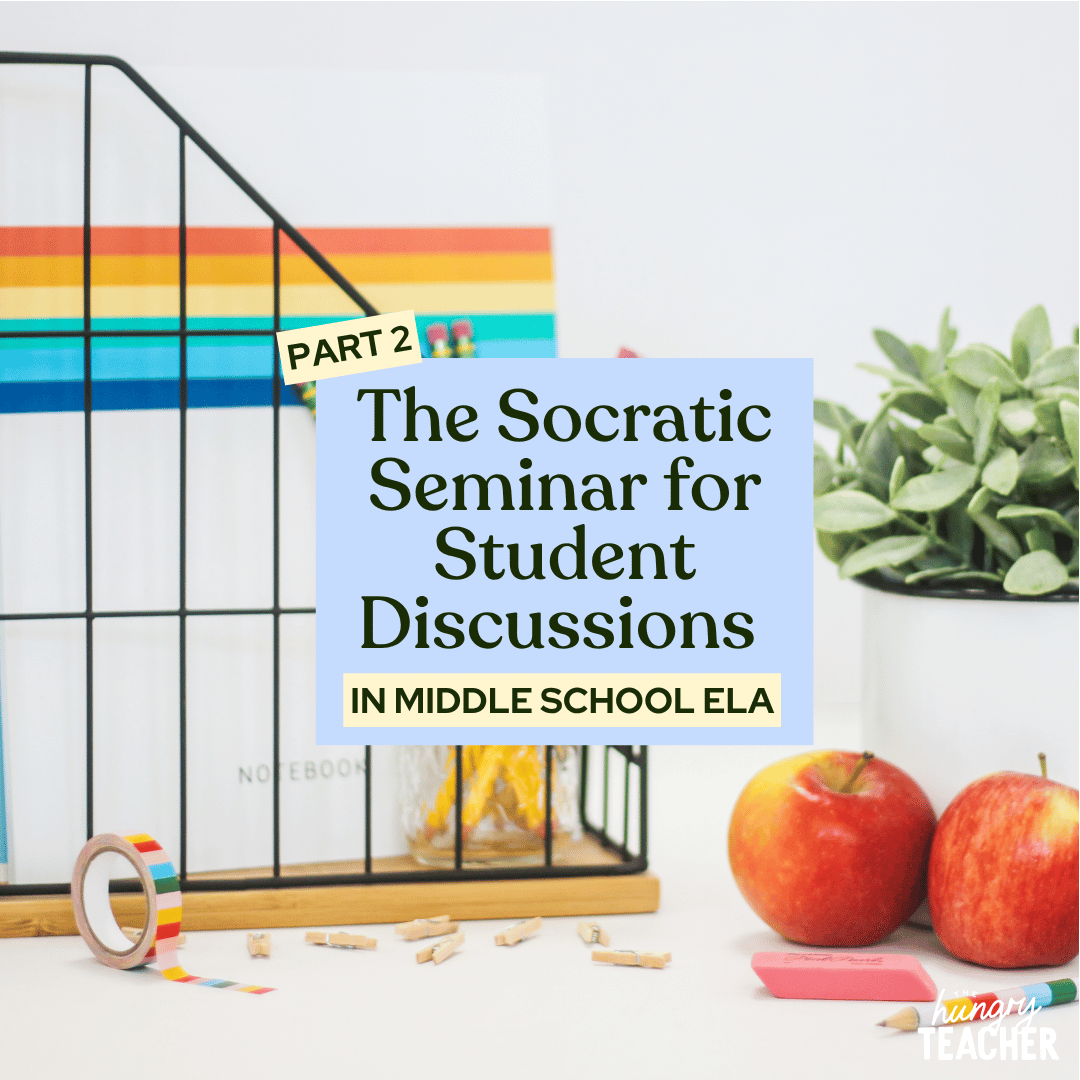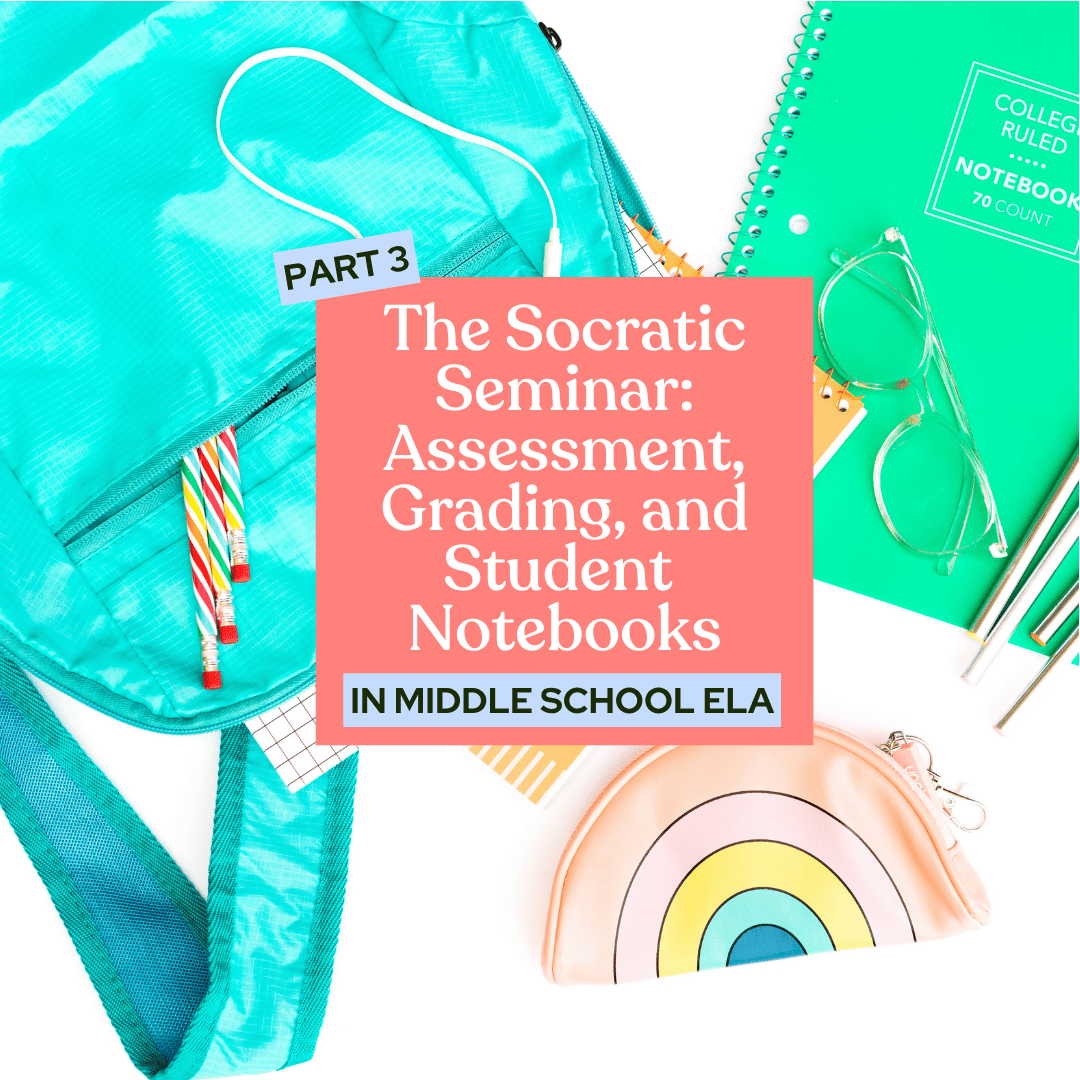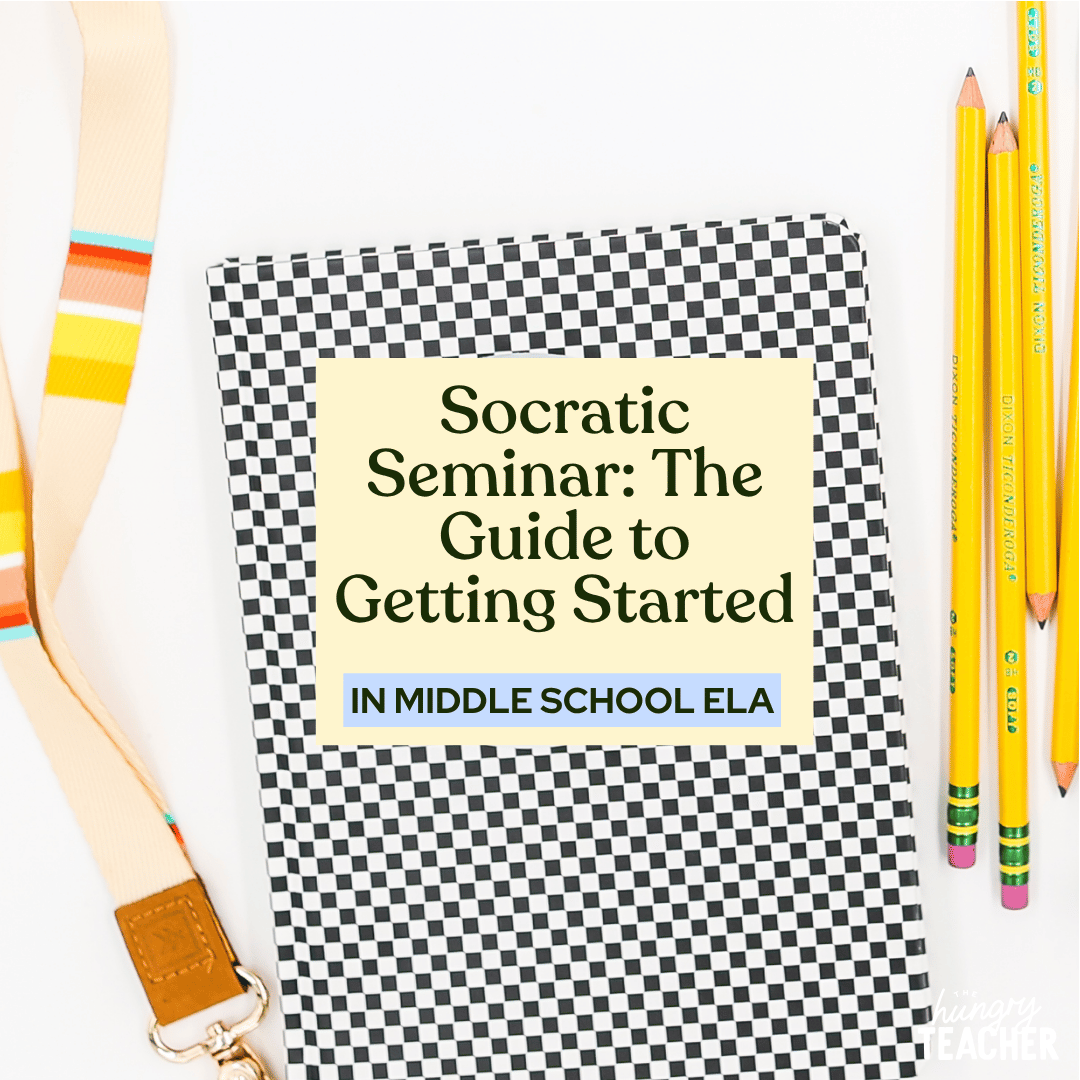hey friend!
I'm Martina.
I provide practical, time-saving strategies that actually work—so you can engage your students, teach effectively, and reclaim your time from the exhausting planning-grading cycle.
Browse Our ELA Resources
The Hungry Teacher Socratic Seminar Reading Units Frequently Asked Questions
Frequently Asked Questions for The Hungry Teacher Fifth-Eighth Grade Reading Units
Seven years ago, when I was teaching fifth grade, I started creating Socratic Seminar Reading Units using my students’ favorite novels. Since then, I’ve taught sixth, seventh, and eighth grade ELA—and those units have evolved right along with me.
They’ve been updated, refined, and expanded into full reading curriculum collections that now include aesthetic redesigns, digital components, vocabulary updates, and answer keys.
So today, I’m answering the most common questions I get about how to use these units in your classroom.
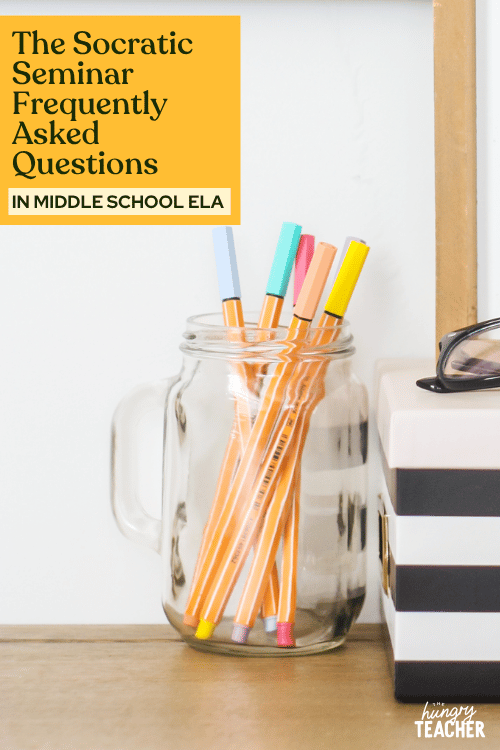
What Should I Be Reading While We Do the Literature Unit?
Whatever you want!
You can read:
- A different class read-aloud novel that isn’t part of the units
- Picture books or short mentor texts
- Short films or story clips to build engagement
The literature unit is meant to serve as the foundation for all the novel-based reading units. You’ll use these lessons to introduce students to core literary terms and concepts while building their interactive notebooks.
By the end of the unit, those notebooks become personalized reference tools—basically student-made “textbooks” that they’ll use throughout the rest of the year.
What Should I Be Reading While We Do the Nonfiction Unit?
Again—whatever you want!
Each lesson now includes links to curated nonfiction articles, stories, and excerpts. You can use these, or bring in your own high-interest texts.
The updated answer keys now correspond directly to the suggested nonfiction readings.
Just like with the literature unit, students will build their interactive notebooks, which act as ongoing reference tools for text structure, central idea, and informational analysis skills.
When Do I Ask the Socratic Seminar Guiding Questions?
Right before reading.
That’s the “guide” in guiding question—it gives students a lens for their thinking while they read.
Here’s how it looks in class:
- Display the guiding question before reading begins.
- Keep it visible while reading (this saves you from hearing, “What was the question again?”).
- After reading, have students do a 3–5 minute quick write in their notebooks.
This routine trains students to read with purpose and prepare their thinking for the deeper interpretive discussion later.
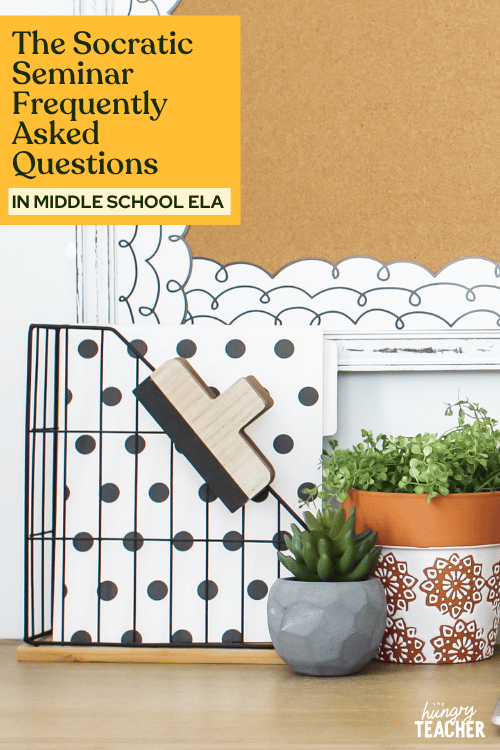
When Do I Ask the Socratic Seminar Interpretive Questions?
After the discussion.
Students use their quick write from the guiding question to help them prepare for the Socratic Seminar.
While they’re discussing, you’ll be jotting notes or charting their ideas on the whiteboard—capturing their thinking as it evolves.
Then, when you pose the interpretive question, students use both the discussion notes and their earlier writing to craft stronger, evidence-based responses.
This process—read, think, discuss, revise—is the heart of how all my reading units are structured.
When Do You Ask the Hook Questions? Do You Have Students Respond?
The hook question comes before reading, and it’s just that—a hook!
It’s a verbal warm-up to spark curiosity about the next chapter or section of the novel.
Sometimes I use it; sometimes I skip it.
I don’t require students to write a response—it’s meant to be quick, engaging, and low-pressure.
Do You Have Assessments for the Socratic Seminar Questions?
This is one of the most common questions I get.
The short answer: no traditional comprehension tests or summative quizzes.
These aren’t “novel studies.”
They’re reading units built around critical thinking, discussion, and writing.
From a teaching philosophy standpoint, the novel is simply the tool students use to meet literature and informational standards. The comprehension happens through discussion and response.
The rubrics included in the units serve as the assessments.
Students demonstrate mastery through their reading responses and participation in the discussion—not by filling in bubbles on a quiz.
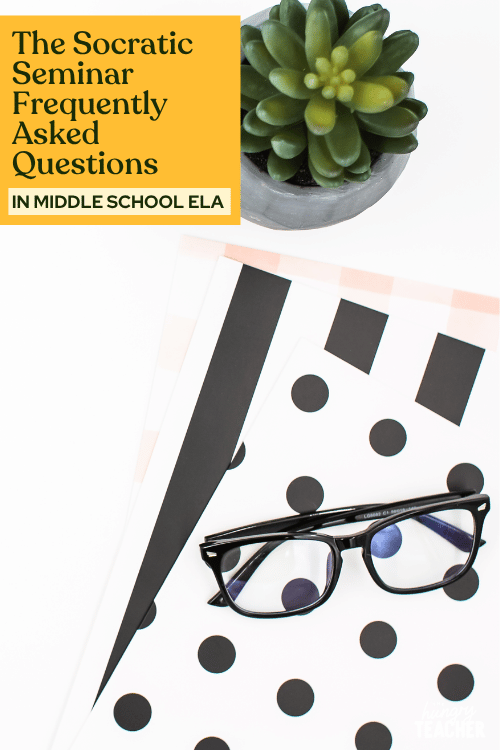
What is the Difference Between the Socratic Seminar Curriculum Bundles and the Growing Bundles?
Growing Bundles
- Contain all of the novel-based reading units for a given grade.
- Automatically update whenever I add a new unit.
- Currently includes 14 reading units for 5th grade and 10 reading units for 6th grade
Full Year Curriculum Bundles
- Include 10 pre-selected reading units (covering all genres): You can check out the 6th grade curriculum and 5th-grade curriculum by clicking on each.
- Also include 40 lessons to explicitly teach literature and informational reading standards.
- Serve as a complete, done-for-you ELA reading curriculum for the year.
Some teachers purchase the growing bundle first for flexibility, then add the curriculum or literature/informational units later to round out their year.
For middle school teachers (grades 6–8), I currently offer growing bundles—
and yes, full middle school ELA curriculum bundles.
Why So Much Focus on the Socratic Seminar?
Because it works.
This model teaches students how to think, not just what to think.
Through daily guiding and interpretive questions, students analyze texts deeply, practice evidence-based reasoning, and strengthen their writing—without ever needing rote comprehension worksheets or quizzes.
Over time, your students start leading the conversations themselves—and their responses reflect it.
RELATED BLOG POSTS
Want a sneak peek at teaching The Hungry Teacher way—with support, structure, and strategy?
When you join the waitlist for The Hungry Teacher’s Hub membership, you get three free classroom-ready resources: a theme unit, an expository writing unit, and a grammar unit introducing mentor sentences. Plus, you’ll get immediate access to a selection of exclusives from the Hub, including editable sub plans, pacing guides, and more.
No strings attached. Just resources you can use right now—and a heads-up when the Hub opens.
3 Free Middle School ELA Units—yours to keep!
JOIN THE WAITLIST + A FREE GIFT
Where to next, line leader?
Welcome to The Hungry Teacher! We create resources that are easy to use, practical, and get results. Teach with confidence—and make it home before dinner.
xo, the hungry teacher
